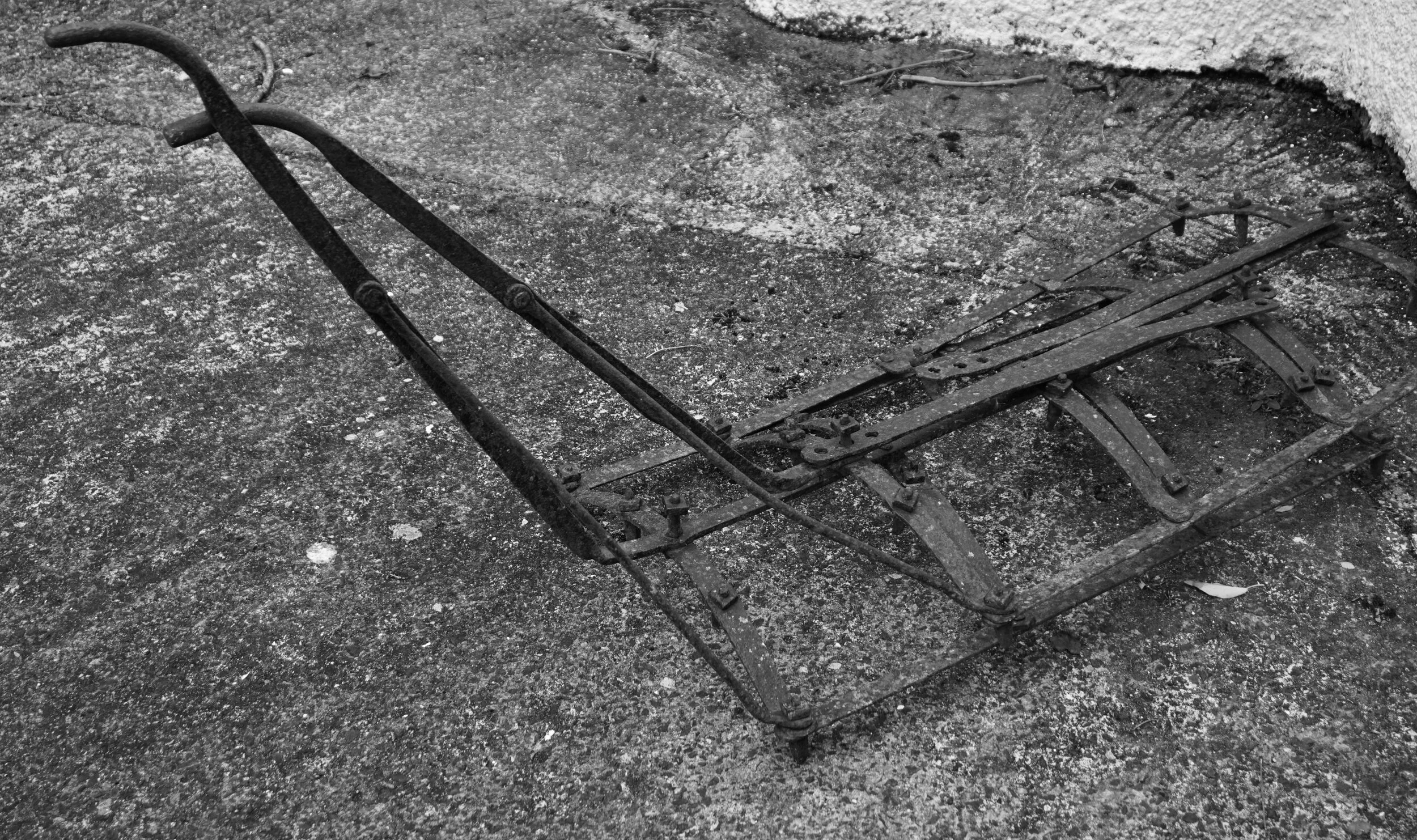Green crops required a lot of looking after in the days before selective weed killers as the soil had to be moved around to stop weeds from growing and smothering the crop.
Harrowing started around a fortnight after sowing, if the surface of the soil was dry. The “common” jointed or zigzag harrow was mainly used to prepare a fine seed bed before sowing, but could at times also be used to keep weeds at bay down drills.
However, an implement that was even better was the saddle drill harrow. This harrow, was made in an arch form which partially embraced the curvature of the drills and worked in pairs drawn by a horse walking between the drills.
Saddle harrows are also on display in several other local collections of agricultural machinery such as Ardress House, a National Trust property in Co Armagh. Indeed modern harrows in a variety of types are still in use by farmers and horticulturists. The example at The Ballance House, like most, was manufactured by a local blacksmith or small scale agricultural engineer.
A harrow can be seen on the Bayeux Tapestry made in 1080 and in various forms harrows have been in use since Roman times. The technology may change, but the basics of good seed bed preparation and keeping weeds at bay do not change.
Reference: Memories from the Farmyard by Paul Callaghan, FarmWeek columnist, Published by Colourpoint Books, Newtownards, Co Down NI.







